Even though the outside temperatures have dropped, you can still grow delicious basil indoors – and it’s a lot easier than you might think.
If you live in a location that features cold fall and winter seasons, then your outdoor gardening season is about to come to an end. That is if it hasn’t already! Thankfully, that doesn’t mean you have to stop growing altogether. That’s where easy-to-grow indoor herbs like basil come into play.
Basil is actually one of the easiest herbs to grow indoors. With the right growing conditions, you can continually grow and harvest basil in the comfort of your own home – and right through those cold winter months.
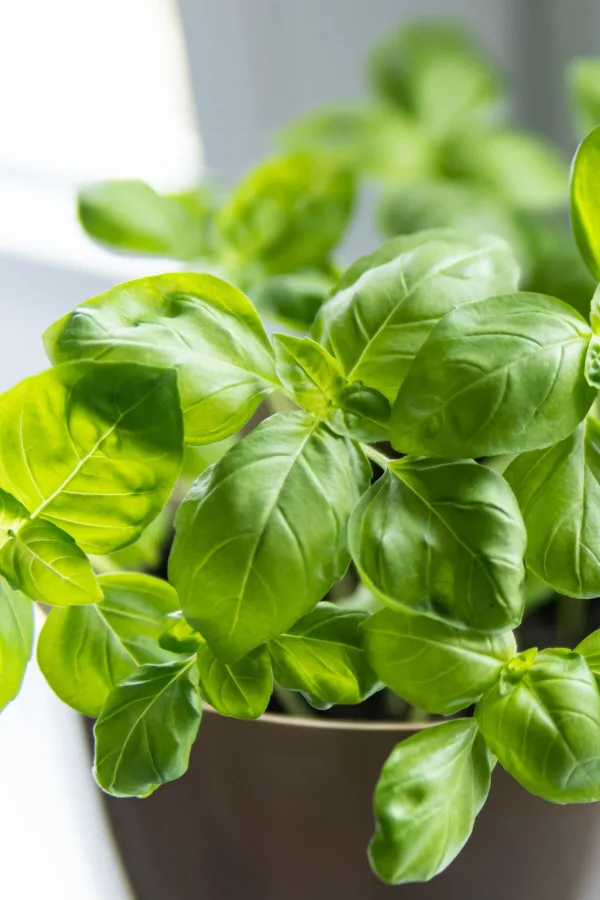
Just imagine how good those homemade pasta dishes or baked pizzas will be topped off with freshly cut basil. The thought of the aroma alone is enough to make your mouth start to water! (Need some good recipe ideas? Try Tomato Basil Bruschetta or Basil Chickpea Burger.)
Basil is actually an annual, but you can enjoy growing it no matter what time of year it is with these simple tips and tricks. Whether you are creating new starts from your established summer plants, or you are starting from seed – this article has you covered!
How To Grow Basil Indoors
Once the outdoor temps start to drop to 50º Fahrenheit or below, your basil plants and other herbs need to be transferred indoors if planted in the ground. While there are some late season crops that you can still harvest outside in the fall, your herbs will do better indoors where it is warmer and protected from colder temperatures.
If your plants are already growing outside in potted containers, they can easily be brought inside as well. You can also start brand new plants using seeds as well if outside plants are not an option. Here is a look how to grow either way, starting with seeds first:
Starting From Scratch
It’s easy to start growing basil indoors from seeds. All you really need to begin is a seed packet, your container, some potting mix, and a little bit of water. Oh, and don’t forget the lights (more on this below)!
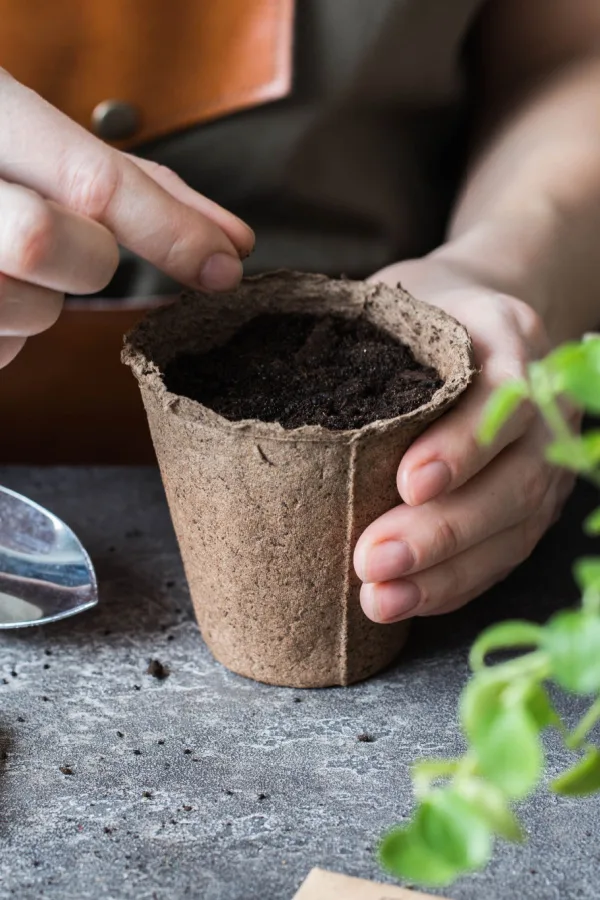
Choose a small container that is around 4 to 6 inches wide and features a drainage hole in the bottom. Since basil is such a compact plant, you can grow it even if you are lacking in space, and the 4 to 6-inch size works well for most.
You can definitely use a larger container if you like. Especially if you are planning on frequently harvesting and using basil throughout the long winter months.
Start by filling the container with a good-quality potting soil mix that has already been pre-moistened. You can also add in a little bit of compost to help not only increase drainage but also give the plants a boost of nutrients right off the bat.
Carefully sprinkle the basil seeds on top of the soil, trying to space them apart as you go. Lightly cover with a thin layer of potting mix and use a spray bottle to lightly moisten the surface.
Place the container in a South-facing window or another location that has supplemental lighting and wait for germination. Keep the soil moist but not overly saturated. Your basil should germinate in around 8 to 10 days.
Thinning Seedlings
Once the seedlings are a few inches tall, thin so you only have a few plants per container. Aim for around 3 to 4 plants per 4 inch sized pot. You want the basil you grow indoors to have plenty of good airflow, and thinning helps to avoid overcrowded plants.
It works easiest to just clip the stem off at the soil line as opposed to pulling the seedlings out. Pulling can disturb the other seedlings’ roots and cause your more issues in the long run.
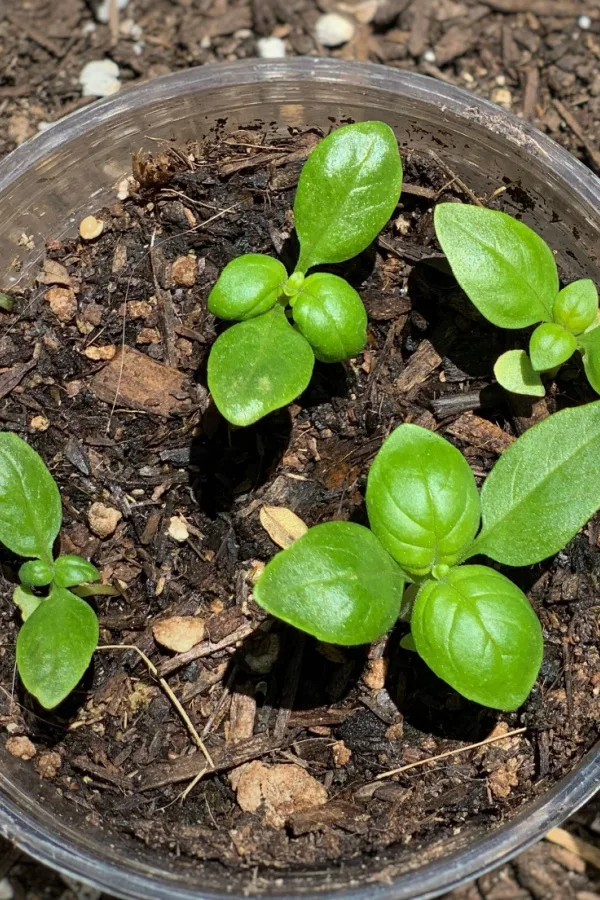
Repotting From Garden
If you are still having successful harvests from your established garden basil, you can dig it up to put into containers for bringing indoors during the colder winter months. Smaller plants usually work better for transplanting. Larger, older basil plants usually have roots that can be well over a foot deep in the soil.
Use a small garden trowel to dig a few inches away from the plant’s base to help loosen the soil. Carefully dig up the root ball. Try to keep as much of the root ball intact as possible when transplanting to make the transition go smoother.
Use a container that is around an inch or so larger than the plant’s base. Also, make sure that the container has good drainage holes. Use a well-draining potting soil mix like you would if you were sowing seeds from scratch.
Filling The Container
Fill the container up a third of the way with soil and compost. Add the plant, keeping it at the same growth level as it was in your garden, and backfill with additional soil. Tamp down lightly and water well to help set the plant. Keep the soil moist but not overly saturated.
You can alternatively take cuttings of the basil to transplant instead. To do this, cut a piece of the stem where you can see a node. Remove all lower leaves and place in a glass of water.
Before long, you will start to see roots grow from the nodes. After the roots are a few inches long, transfer the new plant into a container filled with potting soil mix. You now have an indoor basil plant ready to go and grow!
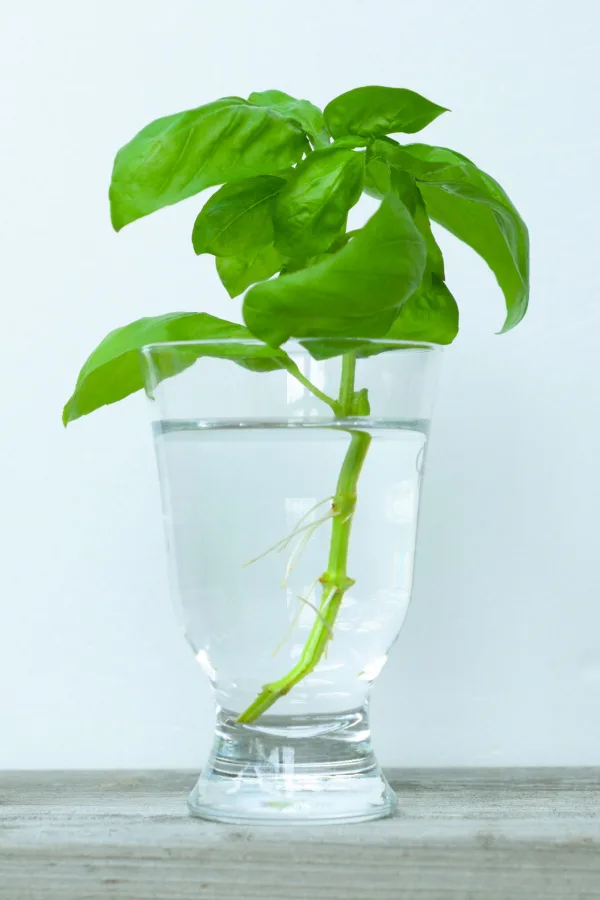
Proper Lighting – Growing Basil Indoors
Basil is a sun-loving plant, so it grows best in bright locations. The plants need around eight to twelve hours of bright sunlight in order to grow properly.
While basil can survive with less sunlight, it just won’t be as flavorful or as prolific. You might end up with leggy plants and only a few leaves available for harvesting. In addition, new seedlings will struggle to germinate properly when starting seeds indoors.
In order to help your potted basil receive 8 hours of sunlight, choose a location in your home that is next to a South-facing window. If you don’t have a South-facing window, you can also use supplemental lighting.
Using Supplemental Lighting
There are many different styles and shapes of grow lights available on markets nowadays that are geared toward growing plants indoors. They range in price and extra features, so be sure to compare products before choosing the one that best fits your needs.
However, keep in mind that you don’t have to purchase expensive grow lights to have good luck growing basil indoors. Ordinary LED or fluorescent lights and fixtures will do the trick of helping the basil to grow just as well as those marketed as “grow lights” with spectrum-specific lightbulbs.
Not only are LED and fluorescent lights often easier to come by, but they are usually a lot less expensive than exclusive grow lights.
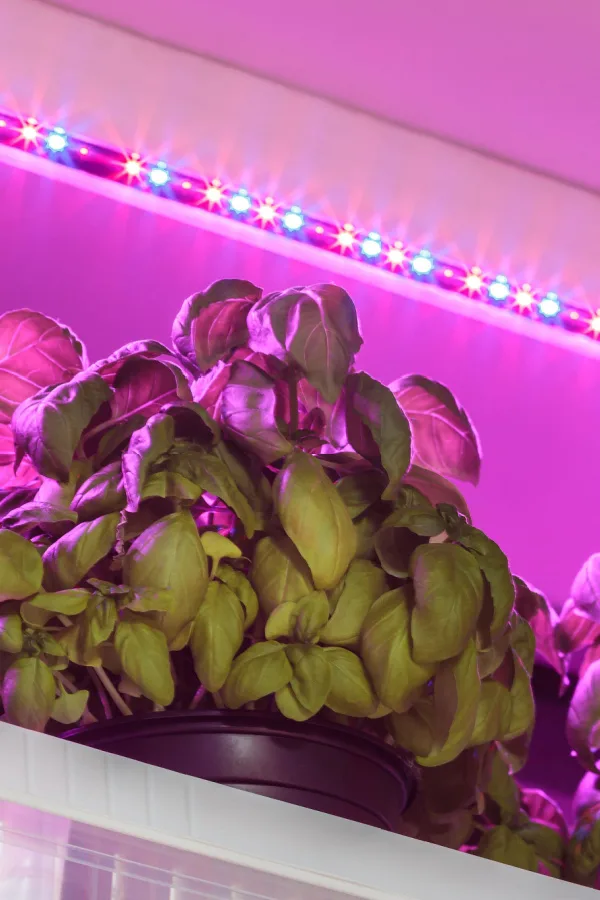
Whichever type of light you use, a light timer will help ensure your plants receive the required 8 hours of light each day without you having to remember to turn the lights on or off all the time.
Additional Lighting Tips
You may need to rotate your potted basil occasionally if your light source is only on one side of the plant. This will help allow the basil to grow uniformly and avoid leaning. If using supplemental lights, keep the lights only a few inches above the top of the basil and move up as needed. This will help avoid leggy and thin plants.
Temperature & Humidity – Growing Basil Indoors
Basil is a warm-weather-loving plant, which is why it grows so well outdoors in the summer months. So in order for basil to thrive indoors, the temperatures should be kept near or above 70º Fahrenheit (21º Celsius). Avoid placing your potted basil near drafty locations or next to air conditioning or heater vents.
You can choose to mist your basil occasionally to help raise the humidity levels. However, most people have better results by using a tray of rocks. Simply fill the waterproof tray with rocks and add enough water to go about halfway up the rocks. Set the container on top. Check the water level occasionally and refill as needed.
Harvesting – Growing Basil Indoors
After about four to five weeks, your basil plants should be established enough to start harvesting. You can harvest the leaves at any size you prefer or you can take entire stems. Only take enough that you need each time though so as to not stress the plant out and create waste.
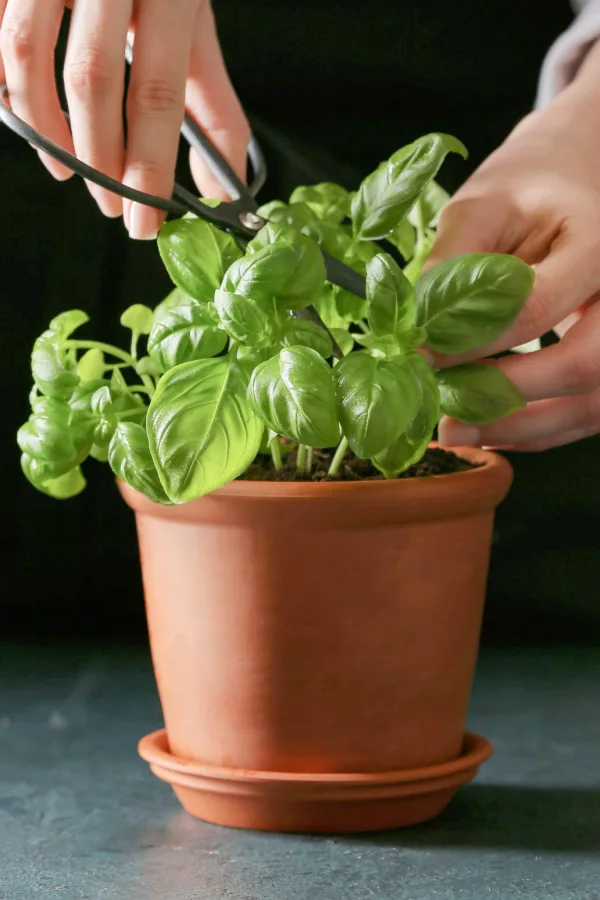
As basil grows, its flavor will change slightly, getting stronger as it ages. Once it has flowered, some people find the flavor of the leaves to be quite bitter. At this point, it’s probably time to move on to a new plant. By sowing a few containers of basil a couple of weeks apart, you can always be sure to have fresh basil on hand for when flowering occurs in one of your older plants.
Pinching Off Leaves
You can help basil grow bushier by pinching off the leaves once it begins growing. This encourages the plants to grow more leaves from the pinching point.
Any time your harvest the basil, you are essentially pruning the plant. The more you harvest, the more it will keep on producing for you. Harvesting often will also help prevent the plant from growing too out of control.
As long as your basil receives plenty of light and the occasional watering, you will be able to enjoy harvesting this aromatic and delicious herb all winter long. The hardest part will be deciding what to make with it!
Follow Our Facebook Page For Even More Great Tips! Simple Garden Life Facebook Page
Simple Garden Life is a website dedicated to keeping gardening fun, simple and enjoyable! We publish two new articles each week along with a new garden podcast episode every two weeks. This article may contain affiliate links.
